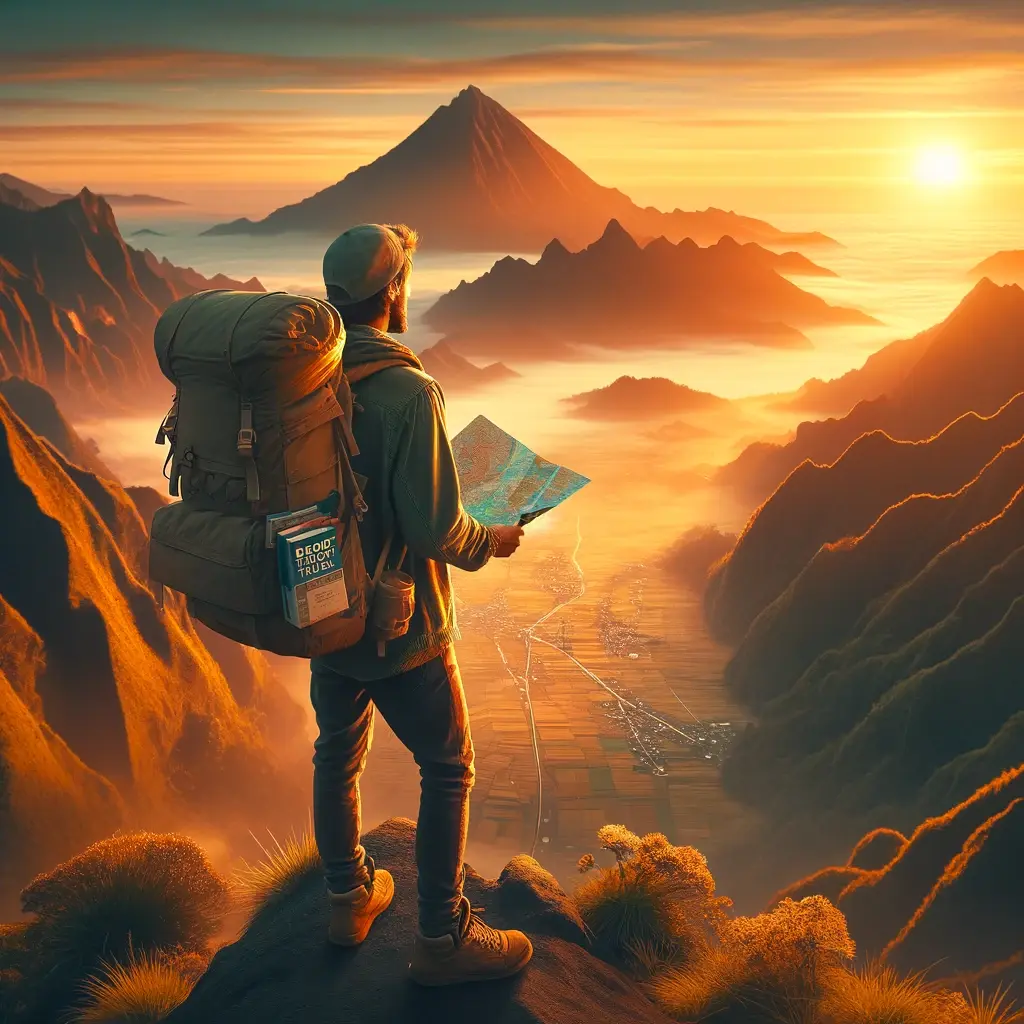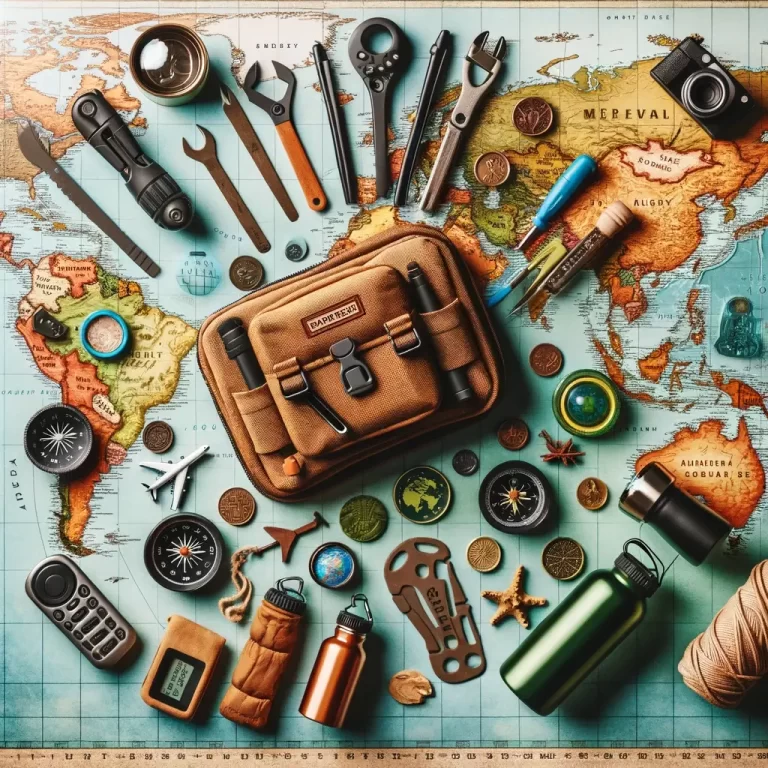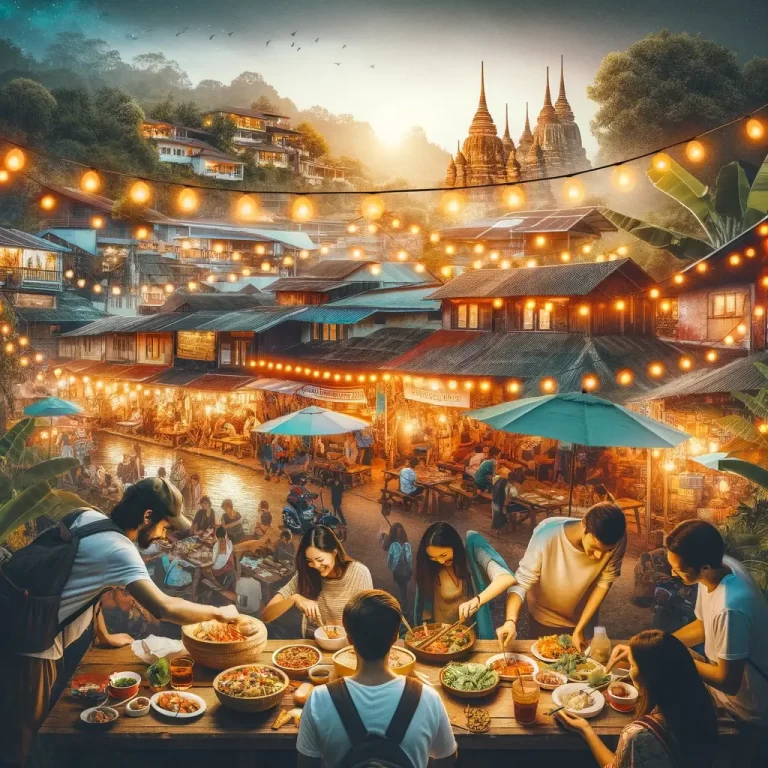Master Your First Backpacking Trip: Tips for Solo Travelers
Have you ever felt the rush of excitement and a hint of nervousness just before embarking on a new adventure?
That’s exactly how I felt before my first backpacking trip. The call of the unknown, the promise of unique experiences, and the thrill of stepping out of my comfort zone were irresistible.
Backpacking for the first time is like opening a door to endless possibilities. It’s not just about traveling from one place to another; it’s about immersing yourself in different cultures, tasting local cuisines, and discovering hidden gems that aren’t in any guidebooks.
For many urban adventurers like us, finding ways to travel uniquely while staying within budget can be challenging. We crave authentic cultural connections and eco-friendly practices but often need guidance on where to start or how to plan effectively.
I remember feeling overwhelmed with questions—what should I pack? How do I stick to a budget without missing out on must-see spots? Luckily, I’ve learned a lot since then. Now, I’ll share practical tips and personal stories from my journey that will help make your first backpacking trip unforgettable.

Why Solo Backpacking?
Solo backpacking offers freedom and flexibility, perfect for first-time solo adventurers. Exploring at your own pace lets you fully immerse in the experience.
Pros and Cons of Backpacking Alone
Pros:
- Increased Confidence: Tackling challenges alone boosts self-reliance.
- Flexibility in Planning: Create a personalized itinerary without compromising with others.
- Personalized Experience: Make decisions that fit your interests, like choosing campsites or trails.
- Safety Concerns: Being alone can increase risks; always inform someone about your plans.
- Loneliness: Some might miss companionship; joining local activities can help.
Solo backpacking empowers newbies by providing opportunities for personal growth.
The flexibility of traveling alone allows for spontaneous decisions such as unplanned detours or extended stays. However, safety is paramount; always share your itinerary and carry essential safety gear.
Combat loneliness by engaging with others on the trail or at campsites. For novices, starting with well-marked trails in managed parks is advisable.
Understanding these aspects helps you prepare for a memorable and enriching solo backpacking adventure.
By understanding these pros and cons, you can better prepare for your first time solo backpacking trip, ensuring it becomes an unforgettable adventure filled with unique cultural connections and personal achievements.
Planning Your Solo Backpacking Adventure
Do Your Research
Research is crucial. I don’t just mean a quick Google search. Dive deep into destinations that catch your eye. Look for blogs, forum posts, and social media groups where you can get insights from those who’ve been there. Understanding the culture, climate, and challenges of your chosen locale significantly enhances your experience.
- Choose a Familiar Trail: Opt for a trail you know or have done before to minimize variables and ensure a smoother experience.
- Research Destinations: Pick trails matching your skill level. If you’re new to backpacking, choose beginner-friendly trails with amenities like established campgrounds, pit toilets, and accessible water sources.
- Plan Ahead: Gather the necessary information and create a realistic itinerary to ensure you have the right gear and backup plans.
When I decided to go backpacking in Mexico, I spent weeks absorbing every piece of information available. This prep work made me confident in exploring the region’s unpredictable weather and remote landscapes.

Budget Wisely
Solo backpacking doesn’t have to be expensive if planned wisely:
- Invest in Fundamental Gear: Prioritize quality gear like good backpacks, sleeping bags, and a backpacking stove for comfort and safety.
- Save on Food: Cook meals instead of relying on expensive restaurants or buying purified water.
Start by outlining major expenses:
| Expense Category | Estimated Cost (USD) |
|---|---|
| Transportation | $200 – $500 |
| Accommodation | $50 – $150 per night |
| Food | $10 – $20 per day |
| Activities | Varies |
| Emergency Fund | $100 – $300 |
Opt for hostels over hotels, cook your meals using local ingredients rather than eating out frequently, and seek free outdoor activities like hiking or visiting parks.
Connect Locally
Connecting with locals enriches travel experiences beyond guidebooks:
- Striking up conversations at local cafés
- Joining community events
- Participating in cultural tours
I remember chatting with locals in a small café during my first solo trip; their tips led me to hidden gems off the beaten path that I would’ve never found otherwise.
Leave No Trace Principle
Always pack out what you pack in, and be mindful of your impact on the environment. This helps preserve nature for everyone to enjoy.
Also, be sure to familiarize yourself with the local wildlife and plant life; respecting their habitats is key to a positive backpacking experience.
Indispensable Backpacking Gear for Solo Adventurers
Packing the right gear ensures a successful first backpacking trip. As a novice backpacker, focusing on requirements will make your journey smoother and safer.
The Non-Negotiables
First off, a durable, comfortable backpack is your most crucial investment. It’s not just about the volume but also the fit and support it offers. After trying several packs, I realized that a 40-50 liter backpack strikes the best balance for most solo adventures, offering enough space without tempting you to overpack.
Next, a lightweight, compact sleeping system is critical. This usually means a quality sleeping bag suitable for the climate and a comfortable inflatable sleeping pad. I’ve slept under the stars in deserts and atop mountains, and the right sleeping gear made all the difference in getting a good night’s rest.
For shelter, a one-person tent or hammock can be a solo traveler’s haven. I’ve alternated between the two depending on the terrain. Tents offer more protection while hammocks are unbeatable for lightweight travel and comfort in warmer climates.

Tools and Tech
A reliable multi-tool has saved me in countless situations from repairing gear to preparing meals. Also, a compact powerful flashlight or headlamp is non-negotiable when exploring in the dark.
As for technology, a durable power bank and GPS device or reliable app on your smartphone can be lifesavers. I remember getting slightly off-track in Patagonia’s wilderness; my GPS app guided me back to my intended path—truly invaluable.
Personal Essentials
Don’t forget water purification methods. I always carry water purification tablets and a lightweight filter. Staying hydrated is crucial; not all water sources are safe to drink from directly.
What to Wear Backpacking
Choosing the right clothing for your first backpacking trip is crucial. Start with moisture-wicking base layers to keep you dry. Add lightweight, breathable shirts and pants for comfort. Don’t forget a warm jacket for chilly evenings!
Backpacking Food
Planning food for a first backpacking trip is crucial to ensure it’s safe and enjoyable. Here are some key points on how I approach it.
Calorie Needs
I always calculate my Basal Metabolic Rate (BMR) to determine daily calorie needs. For example, as a 27-year-old female weighing 123 pounds, I need about 1,360 calories per day. When backpacking, I add 300-400 calories per hour of activity, bringing my total to around 2,800 calories daily. This ensures I have enough energy throughout the hike.
Food Choices
Packing high-calorie, lightweight foods makes a huge difference. My go-to’s include:
- Protein Bars: Great for quick energy
- Trail Mix: A mix of nuts, seeds, and dried fruits provides fats and sugars.
- Tuna: Lightweight pouches that pack protein
- Dried Fruits: Easy snacks that offer natural sugars and fiber
Repackaging items into smaller containers saves space and weight in my backpack.
Meal Planning
Before heading out on any trail or campsite adventure:
- Plan Meals: Consider factors like climate and terrain.
- Personal Preferences: On cold nights, hot chocolate is comforting.
- Variety: Mixing up meals prevents boredom over longer trips.
Here’s an example meal plan for a two-day hike:
| Meal | Day 1 | Day 2 |
|---|---|---|
| Breakfast | Instant oatmeal & coffee | Granola & powdered milk |
| Lunch | Tortilla with tuna & cheese | Peanut butter wrap |
| Dinner | Dehydrated pasta | Couscous with vegetables |
| Snacks | Trail mix | Protein bars |

Gear Essentials
Bringing the right gear makes cooking easier:
- Lightweight Stove: Crucial for heating meals quickly
- Stove Fuel: Ensure there’s enough fuel for the trip duration
- Multipurpose Pot: Useful for boiling water or cooking meals
Investing in quality gear helps keep things ultralight while providing necessary functionality.
For anyone new to backpacking or planning their first time, having this checklist ensures you’re well-prepared without carrying excess weight.
Sleeping
Ensuring a good night’s sleep on your first backpacking trip is crucial. Let’s jump into some key elements to focus on for a comfortable sleeping experience.
First Overnight Backpacking
Planning makes all the difference, especially for first time backpackers. I always research the weather and conditions of my chosen destination before heading out. This helps me pack appropriately and avoid surprises. Make sure you’ve got essentials like a lightweight backpacking tent, sleeping bag, sleeping pad, headlamp, storm-proof matches, water treatment filter, and a reliable backpack.
Campsite Selection
Selecting the right campsite can make or break your trip. Look for flat ground away from bodies of water to avoid condensation issues. Check for overhead hazards like dead trees or loose rocks that might pose dangers at night. It’s also wise to choose spots sheltered from strong winds if possible.
Tent
Invest in a quality tent that’s easy to set up and offers good protection against the elements. For my first time solo camping experiences, I found ultralight backpacking tents ideal due to their manageable weight and compact size. Ensure it has enough space for you and your gear without being overly bulky.
Sleeping Bag
Choosing the right sleeping bag is vital since it directly impacts your warmth and comfort through the night. I prefer mummy bags as they are tapered for better thermal efficiency—perfect when temperatures drop unexpectedly during an overnight hike. If you’re new to backpacking, synthetic insulation might be more practical since it’s resistant to moisture compared to down insulation.
Sleeping Pad
A good sleeping pad provides necessary insulation from the cold ground while offering added comfort. When selecting one, consider factors such as weight (for those who go backpacking often) and its R-value rating which measures thermal resistance. A higher R-value means better insulation—a useful tip for colder environments.
Sleeping Clothes
Wearing appropriate clothes at night significantly enhances sleep quality outdoors. Opt for moisture-wicking base layers that keep sweat away from your skin paired with insulated layers depending on nighttime temperatures at your campsite location. Avoid wearing clothes you’ve hiked in all day; fresh garments ensure better hygiene and warmth retention.
Safety Tips for Solo Backpacking
When embarking on a solo backpacking trip, especially if it’s your first time, prioritizing safety is crucial. Here are some key tips to ensure a secure and enjoyable adventure.
Always Leave a Trip Plan
Before setting out, I always leave a detailed trip plan with a friend or family member. This document includes:
- My exact route and expected waypoints
- Campsites where I intend to stay
- Check-in times
Ensuring someone knows where you are and when to expect you back can be a lifesaver in unexpected situations. For any beginner, this step provides peace of mind and an extra layer of security.
Invest in a Reliable GPS Device
While I love using my phone for its convenience, relying on it as my sole navigation tool isn’t wise. Phones can run out of battery or lose signal in remote areas. That’s why I invested in a dedicated GPS device like Garmin’s GPSMAP 67i or eTrex SE. These devices:
- Have longer battery life
- Offer reliable coverage in remote locations
- Include SOS features for emergencies
This investment ensures that even if my phone fails, I still have reliable navigation. It’s particularly reassuring for those new to backpacking who might not yet feel confident exploring outdoor trails.
Stay Aware of Your Surroundings
It’s easy to get lost in the beauty of the trail, but maintaining awareness of your surroundings is key. I always keep an eye out for:
- Weather changes
- Trail markers
- Potential wildlife hazards
Staying vigilant helps me avoid getting lost or wandering into potentially hazardous areas. This habit becomes second nature over time but is elementary advice for first-time solo backpackers.
Trust Your Instincts
One valuable lesson I’ve learned is to trust my instincts. If something feels off about a trail, campsite, or fellow traveler, I don’t hesitate to change plans. More often than not, our instincts are right; it’s better to be safe than sorry.
By adhering to these practices, I’ve begun countless solo backpacking trips with confidence. Remember: preparation and mindfulness are key components of any safe and enjoyable adventure.
Are you ready for your next adventure?
Check out more of our travel and backpacking tips! Make packing stress-free so you can focus on the journey ahead.
Embracing the Solo Backpacking Experience
Solo backpacking offers unparalleled freedom and personal growth. My first backpacking trip taught me to embrace changes and adapt.
Unique Experiences Await Off-the-Beaten-Path
Finding hidden gems often means stepping away from tourist spots. I remember stumbling upon a tiny, family-owned pastry shop in Lisbon that wasn’t listed on any travel blog or guide. The pastries there were life-changing, and the warmth of the family’s welcome made me feel like I belonged. To find these unique spots, I’ve learned to:
- Talk to locals who are usually proud to share their favorite off-the-radar spots.
- Use social media and forums to discover less talked about destinations.
- Explore areas not typically found in guidebooks.

Cultural Immersion is Key
Solo backpacking isn’t just about covering ground; it’s about soaking in cultures. I make it a point to learn a few phrases in the local language, dine where the locals do, and participate in traditional activities. This openness has rewarded me with authentic experiences like being invited to a family dinner in Italy simply because I asked an elderly gentleman about his day in broken Italian.
Skimping Smartly: Budgeting on the Road
Budgeting doesn’t mean skimping on experience. I swear by a few strategies to keep costs low while maximizing adventure:
- Opt for local accommodations or consider hostels for their community vibe.
- Street food isn’t just economical; it’s a journey through local cuisine.
- Walking tours often offer unique insights at no cost.
The essence of solo backpacking lies in discovering the world at your own pace. It’s about small moments becoming cherished memories—conversations leading to lifelong friendships or serene solitude atop a secluded mountain at sunrise.
Practical Tips for Beginners: Packing Guide
Packing smart can make or break your first time solo backpacking experience. Here’s my go-to checklist for who is starting:
| Item | Purpose |
|---|---|
| Backpack | Carry essentials |
| Sleeping bag | Comfortable sleep |
| Ultralight gear | Reduce weight |
| Food supplies | Essential nutrition |
| Water bottle | Stay hydrated |
Remember, every item should serve multiple purposes if possible. Keeping your pack light makes trekking easier.
Begin on this journey with confidence, knowing you’re prepared with practical tips and essential knowledge tailored for adventurers seeking cultural connections and eco-friendly practices.
Key Takeaways
Choose the Right Trail
If you are willing to go on your first adventure, picking the right trail is crucial. I always recommend starting with a short and easy hike that has accessible amenities. Trails like these are perfect for getting used to your gear and not overwhelming yourself on your first trip. Researching trails online or using apps like AllTrails can provide valuable insights.
Pack Light
Carrying no more than 20% of your body weight in your pack makes a world of difference. When I went on my first time solo backpacking trip, I evaluated each item to ensure it was essential. Swapping heavier items for ultralight alternatives helped me keep my load manageable. For instance, opting for an ultralight sleeping bag significantly reduced my pack’s weight.
Plan Ahead
Weather research and meal planning are non-negotiable steps in preparing for any backpacking trip. Checking forecasts helps avoid unexpected weather conditions, while a detailed meal plan ensures you have enough food without overpacking. Using tools like packing guides or checklists can streamline this process.
Test Your Gear
Testing gear before hitting the trail is one step many skip but shouldn’t. On my shake-down camping trip, I discovered issues with my tent setup that would’ve been problematic during the actual hike. This trial run provided an opportunity to get comfortable with all my equipment.
Leave Early
Starting early ensures you reach your campsite well before dark, giving ample time to set up camp comfortably. On one occasion when I started late, setting up in the dark proved challenging and stressful—an experience I’d rather not repeat!
Bring the Right Gear
Investing in quality backpacking-specific gear pays off in comfort and safety. My lightweight tent and sleeping bag rated for expected temperatures kept me warm without adding excess weight to my pack.
Here’s how my initial packing list looked:
| Item | Weight (lbs) |
|---|---|
| Ultralight Tent | 2 |
| Sleeping Bag | 1 |
| Cooking Kit | 1 |
| Food (2 days) | 3 |
| Water Filtration System | 0.5 |
These key takeaways make first-time backpacking less daunting and more enjoyable by focusing on preparation and smart choices tailored to beginners’ needs.
Key Takeaways
- Choose the Right Trail: For beginner backpackers, starting with a short and easy hike that has accessible amenities is crucial. Researching trails online or using apps like AllTrails can provide valuable insights and ensure a smoother experience.
- Pack Light: Carry no more than 20% of your body weight in your pack. Opt for ultralight gear to keep your load manageable, such as an ultralight sleeping bag and tent.
- Plan Ahead: Weather research and meal planning are essential steps in preparing for any backpacking trip. Use packing guides or checklists to streamline this process and avoid unexpected conditions.
- Test Your Gear: Conduct a trial run with all your equipment before hitting the trail. This practice ensures you’re comfortable with your gear and helps identify any issues beforehand.
- Bring Essential Gear: Invest in quality backpacking-specific items like a lightweight tent, sleeping bag rated for expected temperatures, water filtration system, cooking kit, and adequate food supplies to ensure comfort and safety on the trail.
- Interact Locally: Engaging with locals enriches the travel experience by offering unique cultural insights and discovering hidden gems not found in guidebooks. This enhances the authenticity of your adventure.
Frequently Asked Questions
Is solo backpacking safe?
Yes, solo backpacking can be safe if you take proper precautions. Plan your route, inform someone of your itinerary, and carry essential safety gear. Always stay aware of your surroundings and trust your instincts.
Can beginners go solo backpacking?
Absolutely! Beginners can start with shorter trips on well-marked trails. Research thoroughly beforehand; prepare physically by doing day hikes; gradually increase trip length as confidence grows.
What Are Some Smart Budgeting Strategies for Solo Backpackers?
Smart budgeting strategies include opting for local accommodations like guesthouses or hostels, eating at street food stalls or local markets, and using public transportation. These practices stretch the travel budget further while offering a more localized experience.
How Can Solo Travelers Embrace Unpredictability?
Solo travelers embrace unpredictability by being open to new experiences and altering their plans based on interesting opportunities or local recommendations. Viewing unforeseen changes as part of the adventure makes every first time solo trip more enjoyable. For example, I once changed my itinerary to join a local festival that wasn’t in any guidebook.
What should I pack for my first solo backpacking trip?
Pack light but ensure you have essentials like a quality backpack, weather-appropriate clothing, navigation tools (maps/GPS), first-aid kit, multi-tool, and enough food/water supplies for emergencies. Prioritize versatile items to minimize weight.
What are the benefits of solo backpacking?
Solo backpacking offers freedom to explore at your own pace, personal growth through self-reliance, and opportunities to meet new people. It provides a unique chance for introspection and adventure.







